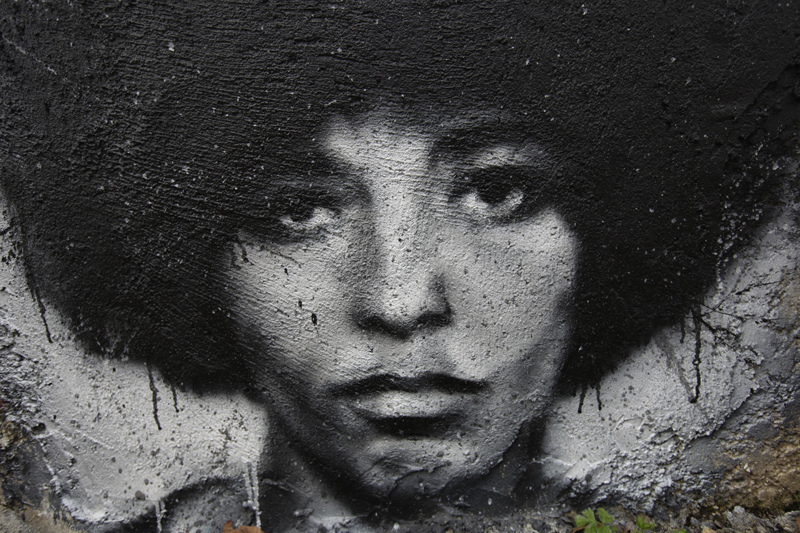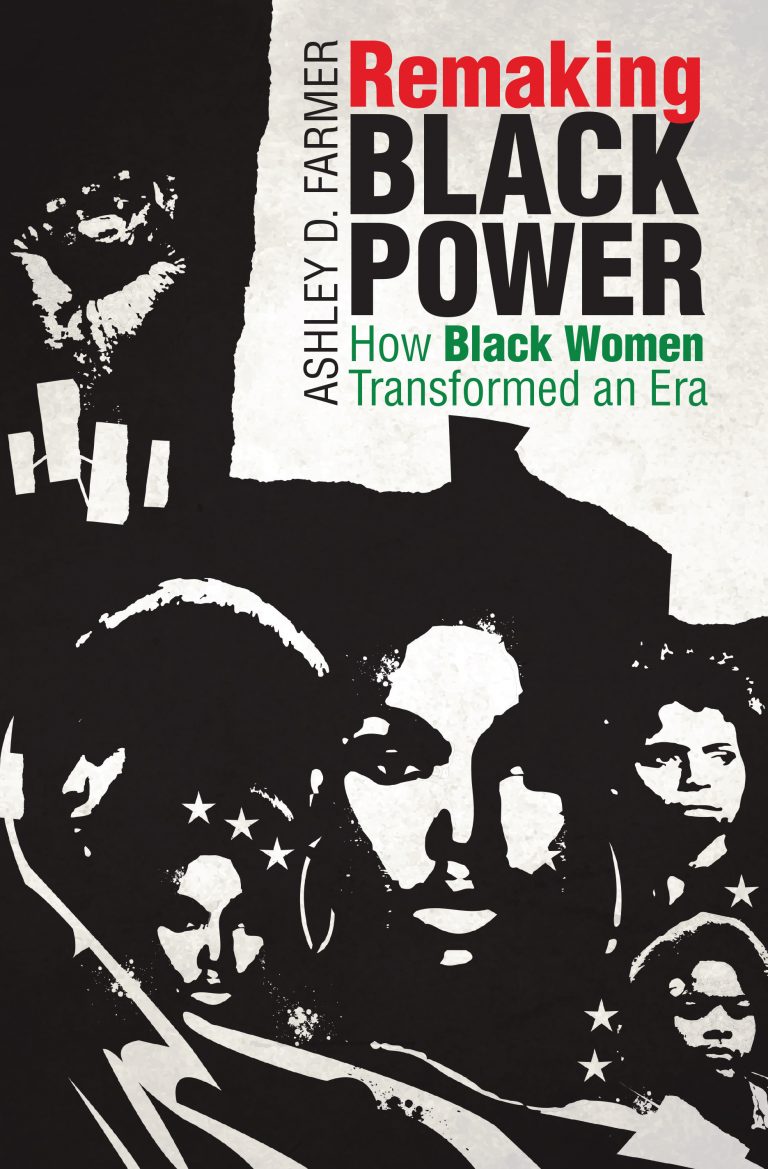Black Women As Theorists: An Author’s Response
*This post is part of our online roundtable on Ashley Farmer’s Remaking Black Power

When I began the research for Remaking Black Power: How Black Women Transformed an Era, I was hounded by two persistent questions that developed from my initial research: how does one convey the depth and breadth of black women’s organizing beyond their roles as the “rank-and-file?” And, how might scholars convey this history beyond the additive approach of “women were there too?” I found the answer to both of these questions, of course, by talking to activists. In the course of the interviews that I conducted with women from multiple Black Power organizations, two themes developed. These activists consistently encouraged me to broaden my understanding of this history in terms of time period, actors, and forms of Black Power activism. They also continued to point me toward their overlooked intellectual and cultural production as evidence of their widespread and varied engagement in Black Power ideals and organizations.
Remaking Black Power is my attempt to answer these questions following the lead of the activists I study. It is a wide-ranging history of Black women thinkers, actors, and cultural producers of the Black Power era using the framework of the gendered imaginary. A key goal of the Black Power era was to redefine Black identity outside of white parameters—especially Black manhood and Black womanhood. Many Black women activists rooted their new ideas about gender roles in a particular group’s temporal, geographical, and ideological commitments. They also debated the correct approach to redefining womanhood and the world around them. I argue that documenting their theories of Black womanhood can not only highlight their multi-faceted engagement with Black Power organizations and ideas, it can also illustrate the centrality of these conversations to the substance and evolution of the era.
Using this framework, the book calls for four interventions. First, the book joins the growing number of histories that call for a broader temporal understanding of the Black Power era. Many of the women I interviewed positioned themselves as the ideological and organizational heirs of earlier Black radical groups. Accordingly, the book explores the period of 1940 to 1980 in order to show how Black women developed and furthered the central ideological features of Black Power. Second, the book not only documents Black women’s activism, but it also centers their intellectual and cultural production. In doing so, it also moves influential women actors and artists from the margins to the center. It also challenges perceptions of men as the sole thought leaders of the era. Third, through this focus on Black women’s intellectual production, the book calls for a critical re-evaluation of the sources historians use to study this period. Finally, the text emphasizes the importance of conceptualizing Black women’s intersectional theorizing and activism as an essential part of Black Power organizing.
I am grateful that the reviewers not only identified these four goals, but that they also offered thought-provoking critiques and questions about them. For example, LeBlanc-Ernest offers important questions about the interplay of men and women in the Party and its newspaper, The Black Panther. Although there is some disagreement about who was the first Revolutionary Artist for the newspaper, as LeBlanc-Ernest points out, the publication, its artists, and its editors were a vital part of the history of Black women, Black Power, and Black intellectualism. She raises important questions about how Party members’ backgrounds shaped the newspaper as a central site of intellectual debate. Specifically, she questions how David Du Bois’s editorial leadership of the Black Panther in its final years affected Black women’s political self-conception and how more “background information” on “key individuals” such as Panther artists Tarika Lewis and Gayle Dickson could help readers better understand Black women’s conversations about gender roles.
Umoja also indicates that there is still a need for more in-depth information about key women figures within the movement. Although the book brings many important activists such as Queen Mother Audley Moore to the fore, he notes that there remains much work to be done in terms of investigating the importance of other women. He, along with LeBlanc-Ernest, also emphasizes the importance of explaining the role of state violence and repression when examining the background, writing, and political activism of Black women organizers particularly as it relates to freedom fighters such as Safiya Bukhari-Alston.
These reviewers’ critiques speak to a broader issue of how we should understand black women’s activism and efforts to shape the gendered imaginary within the confines of male leadership. One of the ways I attempted to respond to this question was by expanding the temporal frame and focus of the book. By situating the writings and art of Panther women and other female activists in broader historical and organizational context, I intended to foreground their discourses about black womanhood that, while influenced by male leadership, also created a distinct and vibrant genealogy of black radical thought. For Panther women who worked with the newspaper even during its final days, I see their work as informed by the debates about revolutionary womanhood taking place around them and an effort, even as Du Bois became editor, to carry on earlier traditions of redefining Black womanhood in more expansive ways. I agree that more information on both Lewis and Dickson would have been useful to readers in understanding this point. That said, one of the consequences of a broader temporal approach is that it did not allow me to offer as much in-depth information about individual activists as I would have liked. However, I hope that LeBlanc-Ernest’s and Umoja’s comments indicate that there is rich history of women who were critical to the movement and who should be the focus of future in-depth historical analysis.
Laura Hill and Mary Phillips each continue this conversation by identifying ways in which I use source material to explore Black women’s individual and collective activism. They also offer suggestions for how my use of evidence could be improved. Phillips, for example, notes that more oral interviews could have aided in contextualizing the ideological conversations that I foreground in the book. Jakobi Williams and Andrea M. Sterling offer a similar critique, noting how the privileging of a few interviews and actors, as well as my focus on organizational archives leaves out a “number of Black women members of such well-known groups who also contributed to the redefinition of the Black Power era.”
Given my goal of challenging conventional narratives about Black women’s marginalization and intellectual production in the movement, the question of evidence is an important one. I conducted interviews with a range of activists including women from the Us Organization, the Black Panther Party, the Third World Women’s Alliance, and organizers of the Sixth Pan-African Congress. More often than not, however, I opted to use these conversations as guides in furthering my research on identifying spaces of Black women’s intra-gender debates about Black womanhood and liberation. In following these women’s advice to seriously attend to their intellectual and cultural production, I hoped to foster conversations about how their ideas challenge our understandings of this era and its gender politics.
Yet, I appreciate these comments because they call for a moment of reflection about what constitutes evidence of intellectual production and political expression among Black women. When researching, I found that we often overlook copious amounts of evidence of Black women’s thoughts, actions, and philosophical leanings because they did not take the form of what has been deemed traditional intellectual expression. This included, but was not limited to, women’s handbooks, articles, artwork, satire, political tracts, prison writings, and meeting transcriptions. As Hill notes, such sources can “show how Black women understood their relationship to Black Power and to illustrate the kind of world they imagined for themselves.” I contend that they can also offer us new approaches for documenting Black women’s theorizing and activism. The women that I study were deeply invested in redefining the hierarchies that governed their lives. I tried to follow their lead by adopting an approach that challenged the logic of archival recovery which has often been dominated by white heteropatriarchal ideas of evidence or proof.
As Joshua Clark Davis notes, this approach also extends to the ways in which I use these sources to reframe how we understand intersectional theorizing within Black Power circles. He states that, “at its core, Remaking Black Power, operates as a history of intersectionality.” Indeed, one of my goals was to show how, when we examine Black women’s intellectual production, we see how they organized with concurrent ideological affiliations and goals in mind. Engaging their writings and artwork also prompts further investigation about how Black women made Black Power circles vital spaces of intersectional theorizing.
However, this intersectional position was not without its challenges. Davis rightly asks how both Black men and white women responded to Black women’s efforts to develop multi-valent analysis of their oppression and liberation. Their responses varied. To be sure, both white women and Black men questioned Black women’s commitment to the movement and to ending oppression because of their intersectional stance. However, one of the goals of Remaking Black Power is to illustrate how these conversations were more complex than many of us have previously acknowledged. Many men and women credit Black women, and their intersectional writings, with shifting their thinking about the scope and goals of Black liberation and causing them to revise their previous critiques and conservative gender politics. Examining these nuances shows that these conversations were not inherently antagonistic nor static and that they can offer valuable insight into the inner workings of theorizing liberation.
I am grateful to the reviewers for engaging with the book and my attempt to show how Black women across the political spectrum developed analyses of their lived conditions, imagined different realities and potentialities, and developed distinct ideas about their roles in bringing this new world into existence. I also appreciate Black Perspectives for offering an arena in which reviewers could critically analyze my efforts and point me and other students of this period toward new avenues for research. Ultimately, I hope that the forum and the book is as valuable for readers as it has been for me in reflecting on the usefulness in exploring different ways of remembering the past as well as the importance of teasing out the nuances of Black women’s freedom dreams.
Copyright © AAIHS. May not be reprinted without permission.
